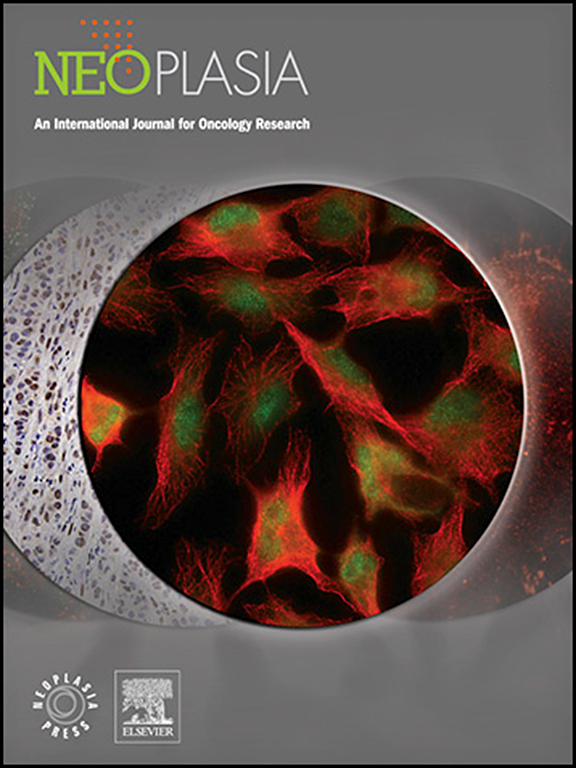Spatial profiling of endoplasmic reticulum stress markers in tumor associated cells predicts patient outcomes in pancreatic cancer
IF 4.8
2区 医学
Q1 Biochemistry, Genetics and Molecular Biology
引用次数: 0
Abstract
Introduction
The impact of endoplasmic reticulum (ER) stress in tumor-associated cells, such as cancer associated fibroblasts (CAFs), immune cells and endothelial cells, on patient outcomes in clinical specimens have not been examined. For the first time, we characterized the expression and spatial locations of ER stress markers, BiP and CHOP, in tumor-associated cells and assessed their prognostic significance in a panel of pancreatic ductal adenocarcinoma (PDAC) patient samples.
Methods
Multiplex immunofluorescence was performed on tumor microarrays and images were analyzed using HALO AI software.
Results
BiP and CHOP were upregulated in CAFs and endothelial cells in PDAC sections relative to non-neoplastic pancreas sections. High BiP expression in CAFs and endothelial cells was associated with greater vascular invasion and in immune cells was correlated with increased tumor size. High CHOP expression in immune cells correlated with poor patient survival. CAFs and immune cells were more likely to express BiP or CHOP when located close (< 20 μm) to tumor cells. High expression of CHOP in CAFs close to tumor cells correlated with improved patient survival.
Conclusion
For the first time, this study demonstrated that ER stress occurs in CAFs and immune cells predominantly in proximity to tumor cells in PDAC patient tissue. The correlation of high ER stress in immune cells with poor patient survival highlights the importance of the TME and the use of spatial analysis for the identification of novel biomarkers.
肿瘤相关细胞内质网应激标志物的空间谱分析预测胰腺癌患者的预后。
在临床标本中,肿瘤相关细胞(如癌相关成纤维细胞、免疫细胞和内皮细胞)内质网(ER)应激对患者预后的影响尚未得到研究。我们首次表征了肿瘤相关细胞中内质网应激标志物BiP和CHOP的表达和空间位置,并在一组胰腺导管腺癌(PDAC)患者样本中评估了它们的预后意义。方法:对肿瘤微阵列进行多重免疫荧光检测,并用HALO AI软件对图像进行分析。结果:与非肿瘤胰腺切片相比,PDAC切片中cas和内皮细胞中BiP和CHOP表达上调。在CAFs和内皮细胞中,高BiP表达与更大的血管侵袭有关,而在免疫细胞中,高BiP表达与肿瘤大小增加有关。免疫细胞中CHOP的高表达与患者生存率低相关。CAFs和免疫细胞在靠近肿瘤细胞(< 20 μm)时更容易表达BiP或CHOP。CHOP在靠近肿瘤细胞的CAFs中高表达与患者生存率提高相关。结论:本研究首次证明,在PDAC患者组织中,内质网应激主要发生在靠近肿瘤细胞的CAFs和免疫细胞中。免疫细胞中的高内质网应激与患者生存差的相关性突出了TME和使用空间分析识别新的生物标志物的重要性。
本文章由计算机程序翻译,如有差异,请以英文原文为准。
求助全文
约1分钟内获得全文
求助全文
来源期刊

Neoplasia
医学-肿瘤学
CiteScore
9.20
自引率
2.10%
发文量
82
审稿时长
26 days
期刊介绍:
Neoplasia publishes the results of novel investigations in all areas of oncology research. The title Neoplasia was chosen to convey the journal’s breadth, which encompasses the traditional disciplines of cancer research as well as emerging fields and interdisciplinary investigations. Neoplasia is interested in studies describing new molecular and genetic findings relating to the neoplastic phenotype and in laboratory and clinical studies demonstrating creative applications of advances in the basic sciences to risk assessment, prognostic indications, detection, diagnosis, and treatment. In addition to regular Research Reports, Neoplasia also publishes Reviews and Meeting Reports. Neoplasia is committed to ensuring a thorough, fair, and rapid review and publication schedule to further its mission of serving both the scientific and clinical communities by disseminating important data and ideas in cancer research.
 求助内容:
求助内容: 应助结果提醒方式:
应助结果提醒方式:


